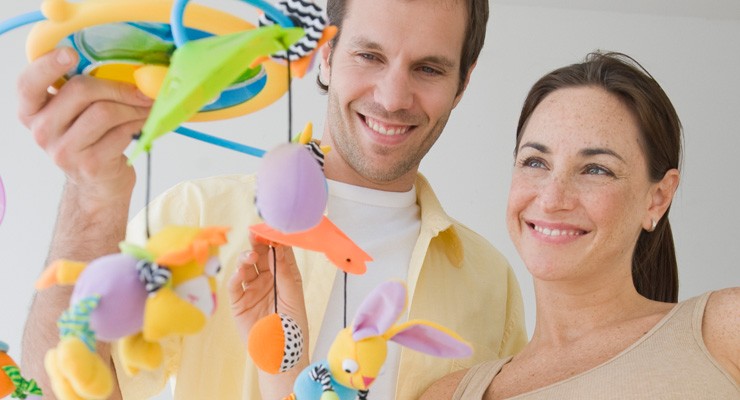Helping Your Baby Sleep Safely Through the Night
SIDS, suffocation risks — there’s a lot for parents to remember. Here are ways to make bedtime a safe time.

In his or her first year, your baby will spend a lot of time sleeping — 16 to 20 hours a day for newborns. So it's very important that baby is safe while asleep.
SIDS
Most parents have heard about sudden infant death syndrome (SIDS), when seemingly healthy babies die suddenly in their sleep and no cause can be established. Babies born prematurely are at heightened risk.
You may have some worries about SIDS and your baby. There are some simple things that can help decrease the risk of SIDS.
- At the top of the list of recommendations for safe sleeping issued by the American Academy of Pediatrics: Place your baby on his or her back to sleep. Protective features of your newborn’s airways will prevent them from choking, even if they spit up. Nine out of 10 cases of SIDS occur in children younger than six months. Nonetheless, to be safe infants should be placed on their backs to sleep until one year of age. Once a baby can roll over and back, they may remain sleeping in the position they choose.
- The crib should have firm surfaces. Never place babies to sleep on soft surfaces, including couches, pillows, quilts or blankets. Do not use loose-fitting blankets, sheets, quits and mattresses that don’t fit tightly into corners. It is alright to use a fitted sheet, but not a loose sheet. Don't use crib bumpers and do not put baby to sleep with stuffed animals or other soft toys.
- Keep the room at a temperature you find comfortable and don’t dress your child in more than one layer of clothing more than you need to stay warm.
- When your infant is awake, make sure he or she has plenty of supervised tummy time, which will help strengthen the baby's neck, shoulder and arm muscles.
- Get regular prenatal care. In addition, do not smoke during pregnancy, and do not smoke or allow smoking around your baby. SIDS is also less prevalent among breastfed babies.
- Those who care for your baby should also know the sleep safely practices and ways to reduce the risk of SIDS.
Dangers of co-sleeping
Co-sleeping is the practice of infants and parents sleeping together in the parent’s bed. It increases the risk of SIDS and other sleep-related causes of infant death, such as suffocation. According to the U.S. Consumer Product Safety Commission (CPSC), a baby sleeping in a parent’s bed faces these suffocation hazards:
- Getting trapped between the bed and wall.
- Becoming wedged or caught in between headboards, footboards or bed frames.
- Being surrounded by soft bedding, pillows, etc. This may also occur if a baby falls off the bed into piles of clothes or other items.
Instead, put the baby to sleep in a safety-approved crib or bassinet in the same room where you sleep. If you breast-feed your infant in bed, make sure to put the baby back into his or her crib afterward.
A safe nursery
It’s important to create a safe sleeping environment for your baby. A new crib and mattress are a good idea. The U.S. Consumer Product Safety Commission has stringent standards for cribs, banning “drop-side” rails and calling for stronger crib slats, mattress supports and hardware.
You can’t tell from looking whether a crib meets the new standards. The commission recommends against reselling or donating older cribs.
Other ways to keep your baby’s room a safer place:
- Keep objects with cords, ribbon or elastic (such as mobiles) away from the crib. Put baby-monitor cords well out of baby’s reach.
- Don’t place baby’s crib near a window. Move electric wires, blinds and drapery cords out of reach. Babies can strangle if entangled in these cords.
By Beth Hawkins, Contributing Writer
Sources
American Academy of Pediatrics. SIDS and other sleep-related infant deaths: Expansion of recommendations for a safe infant sleeping environment. Task force on sudden infant death syndrome. Pediatrics 2011;128:1030-1039. Accessed: June 27, 2016.
National Institutes of Health. Eunice Kennedy Shriver National Institute of Child Health and Human Development. How can I reduce the risk of SIDS? Accessed: June 27, 2016.
U.S. Consumer Product Safety Commission. Safe to Sleep: Crib information center. Accessed: June 27, 2016.
Last Updated: June 28, 2016
